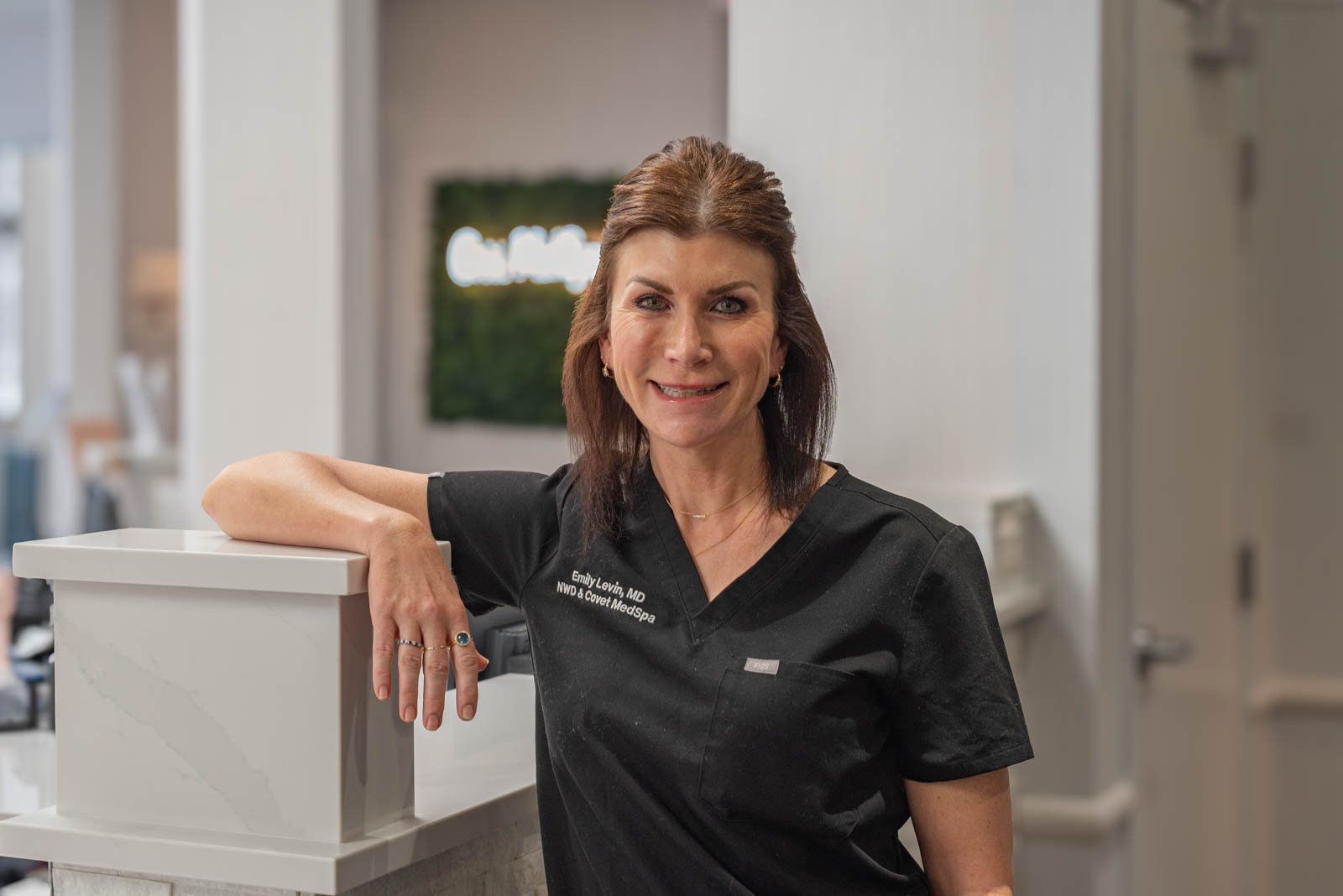Author: Dr. Emily Levin, Board-Certified Dermatologist and Co-Owner of Northwest Dermatology Group and Covet Med Spa in Bingham Farms
Less sun, cool temps and face masks exacerbating common skin conditions
Wearing a mask to protect yourself and others from the COVID-19 virus can cause acne on your face. But you can take steps to alleviate that.
Every fall, after summer winds down, skin care concerns rev up and dermatology offices fill up faster than any other time of the year. Less sunshine, less warmth and less moisture in the air are the main culprits.
During this coronavirus pandemic, wearing masks can trap bacteria and plug pores. It is also part of the skin health equation, as the breeding ground for breakouts intensifies.
Four of the season’s top five skin care concerns have been exacerbated by wearing masks. The good news is there are easy, effective ways to prevent, treat, reduce and manage them.
Acne
Clear complexions are more common during the summer months. This is due to one portion of the sun’s ultraviolet rays can improve acne by killing off the bacteria that cause it. Because most UV rays are harmful to the skin, the sun is not a treatment for acne.
Acne is known to primarily affect adolescents and teens. But mask wearing is creating a discernible uptick in adult acne among individuals who have not had it before or who have been prone to flareups in the past. Masks create an environment filled with steam, moisture and bacteria, increasing the skin’s natural bacteria, and plugging up pores. To improve this, people experiencing an acne breakout can swab their facial skin with a medicated pad prior to putting on a mask. They can do this in addition to applying antibacterial and anti-oil creams in the morning.
At night, there are prescription face creams that will unclog pores and kill off bacteria while sleeping. A dermatologist may even recommend using specific cleansers and fragrance-free products if the skin is very sensitive. Reusable masks should also be washed regularly in fragrance-free detergent and fabric softener to prevent bacteria buildup and irritation.
Dandruff
Dandruff (seborrheic dermatitis) on the scalp occurs year-round. But this fall, as masked students are back in school and more masked workers are returning to offices, facial dandruff is flaring up. Heat and moisture trapped under masks are causing skin under beards, mustaches, and around the nose to get red and flaky. Prescription creams and cleansers can be used for facial dandruff to treat and prevent future flare ups.
Eczema and Rosacea
Eczema, a histamine-releasing disorder. The result is itchy, uncomfortable red skin patches all over the body.
Rosacea is a genetic disorder where blood vessels dilate and create a red, flush appearance on the face, neck and chest.
Both conditions can lead to burning, stinging and itching. People prone to either condition are ripe for flareups in the fall, when the air is cooler and drier. They may notice increased breakouts due to face masks worn too tight or made of scratchy, irritating fabrics, or that absorb natural moisture on the face.
Prescription moisturizers and prescription eczema and rosacea creams will hydrate skin. Oral medications may be necessary to help reduce symptoms.
Dry Skin and Lips
Summer humidity combined with drinking more water keeps bodies and skin hydrated. But when fall arrives, so does broken, cracked and dry skin. This is usually because of drier air — as well as not drinking enough water. It is essential to stay hydrated inside and out. Drink more water, moisturize the skin, run a humidifier in the bedroom at night and use a medicated skin cream, if needed.
Sun Damage
Though not related to mask wearing, summer sun damage is one of the primary reasons dermatologist offices fill up in the fall. Regardless of how much sunscreen was used while enjoying the sunshine, moles, freckles and sunspots get darker during summer.
People become understandably concerned when their tans fade, and these skin spots become more noticeable. It is important to be examined by a dermatologist to determine if anything is cancerous. Once concerning conditions are ruled out, cosmetic treatments can include prescription bleaching creams, chemical peels and lasers to rejuvenate the skin and improve sunspots. The latter two options require some down time while the skin peels.
As seen in the The Daily Tribune, The Oakland Press, Macomb Daily, and The Morning Sun.



